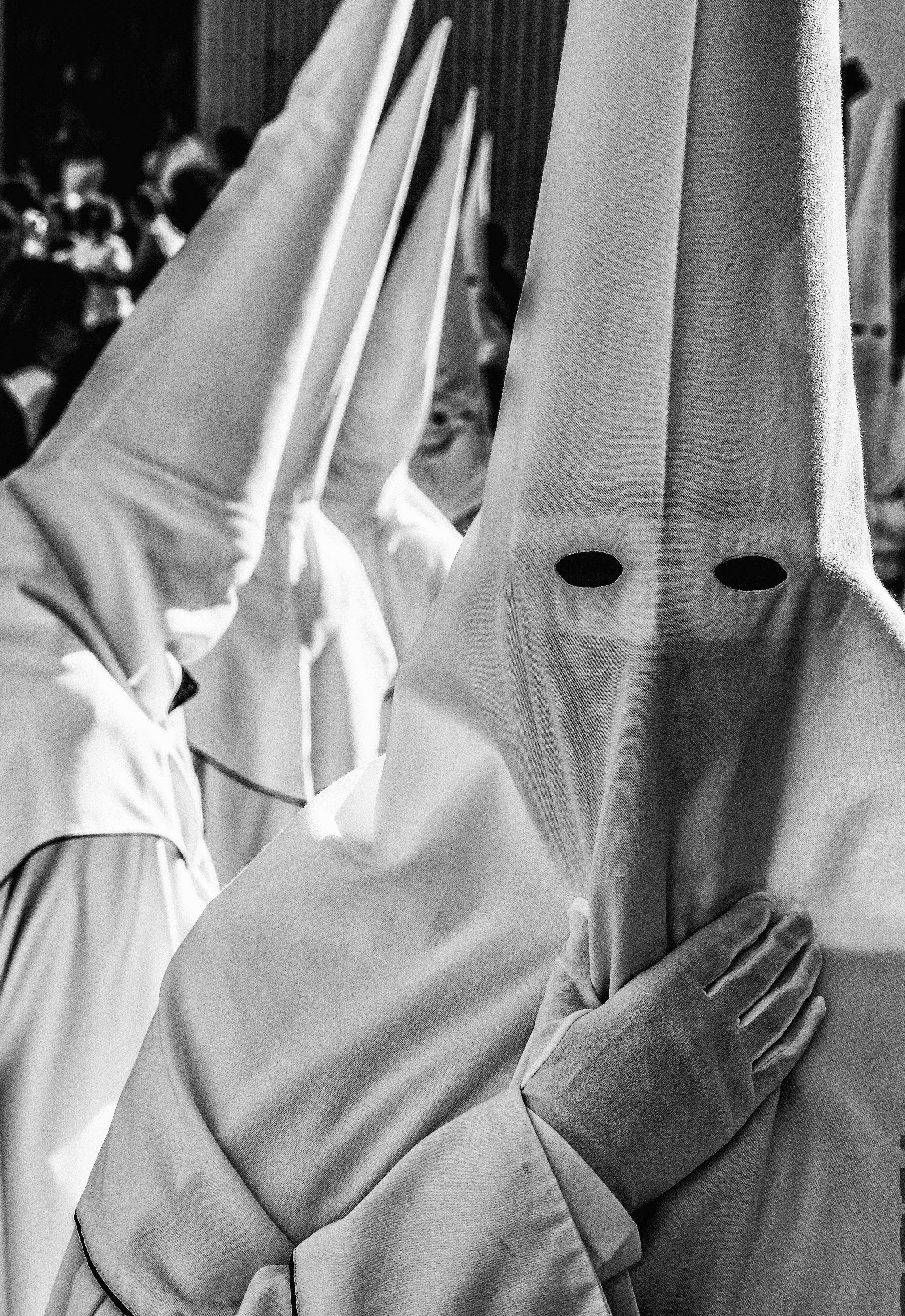Semana Santa
by Michael Kennedy
As an antidote to boredom, I travel and use a camera as a passport into other worlds. Last year I boarded Qatar Air 859 in Seoul and flew non-stop to Doha for a two-hour layover, before moving on to Madrid.
My destination: Seville for the annual Semana Santa (Holy Week) festivals.
I am a recovering Catholic, and have zero interest in dogma. Yet public rituals, almost a form of social anthropology, fascinate me completely. Whether the subjects are Montana cowboys at the Wolf Point Stampede, Chicano low-riders in southwestern New Mexico, or Roger Corman-styled biker rallies in Bible-belt Oklahoma, I cannot resist documenting these scenes with a camera.
I want big bonfires in my life to make me feel alive. At times, this means dropping my mask of conformity and no more walking the wheel like a docile rabbit, nibbling at the empty bait. It’s time to hit the road.
My budget always means traveling in the economy section of an airplane, which frequently makes me feel homicidal.
Behind me, there’s often a non-stop crying-and-kicking infant, or a young woman who talks as if hell-bent on reciting Joyce’s Finnegan’s Wake from start-to-finish.
In front of me, there is the passenger who insists on reclining in the barebones seat to the point that I can smell all the rank rubbish he has consumed over the past day – or, in the case of a female, the smell of her cheap shampoo sometimes makes me actively nauseous.
Once, on a long-ass flight from Paris-to-Seoul, the man sitting next to me fell asleep and alternately snored like an overweight bear or slumped beyond the arm of his seat so that he invaded my space enough that he seemed nearly on the verge of performing a lewd act.
The celebration of Semana Santa in Spain to express popular piety relies almost exclusively on the processions of the brotherhoods or fraternities. These associations have their origins in the Middle Age, but a number of them were created during the Baroque Period, inspired by the Counter-Reformation.
Membership is usually open to any Catholic person, and family tradition is an important element to become a member or “brother” (hermano).
A common feature in Spain is the almost general usage of the nazareno or penitential robe for some of the participants in the processions. This garment consists of a tunic, a hood with conical tip - or capirote used to conceal the face of the wearer, and sometimes a cloak.
The exact colors and forms of these robes depend on the particular procession. The robes were widely used in the medieval period for penitents, who could demonstrate their penance while still masking their identity.
For an American, the spectacle of men gathered together in white robes wearing hoods requires a serious cultural adjustment. Such appearances instantly evokes an association with the Ku Klux Klan (KKK), a disgusting secret hate group founded in Tennessee six months after the Civil War ended.
A one-time political arm of the Democratic Party, the KKK was in business to help perpetuate a form of slavery during the nearly 100-year Jim Crow era. Ironically, Barrack Obama, the first American President with African heritage - Kenyan, to be precise, was a Democrat.
While Semana Santa processions are held throughout Spain, Seville is the scene of some of the most spectacular festivities in the country.
During my four-days in Seville, I stayed at a hotel about six blocks from Plaza del Salvador, where a great many processions gathered before moving through the city streets.
Throughout Holy Week in Seville, crowds jammed the sidewalks at all times of the day and night to glimpse the procession - sometimes including three generation families, because very young children often wore the traditional brotherhood attire for the processions, and family pride was undeniable.
These days Spain is light years removed from the fascist regime of Franco, especially in the grim years of the post-World War II era when the country was isolated by the Western allies.
Yet the procession of men wearing medieval costumes, marching slowly through narrow cobblestone streets - even in a large city like Seville, evoked the work of W. Eugene Smith and his classic 1951 Life magazine photo essay, known as The Spanish Village.
The entire spectacle of Semana Santa lent itself perfectly to B&W photography - and primarily with a lens that ranged from 28mm-to-35mm. To cover all bets I used a Nikon D5300 with an 18mm-300mm zoom lens.


















